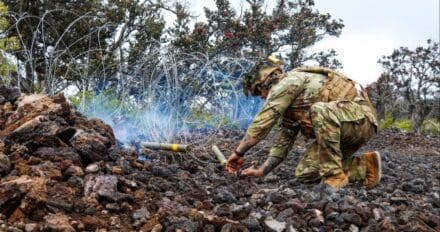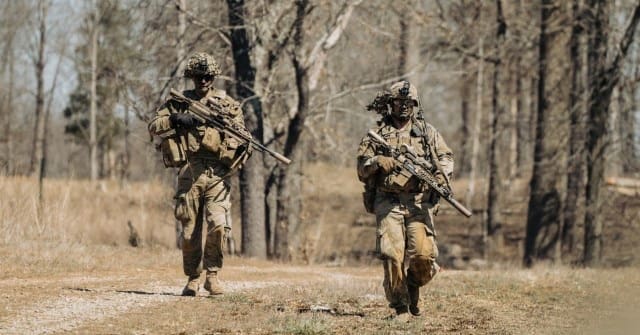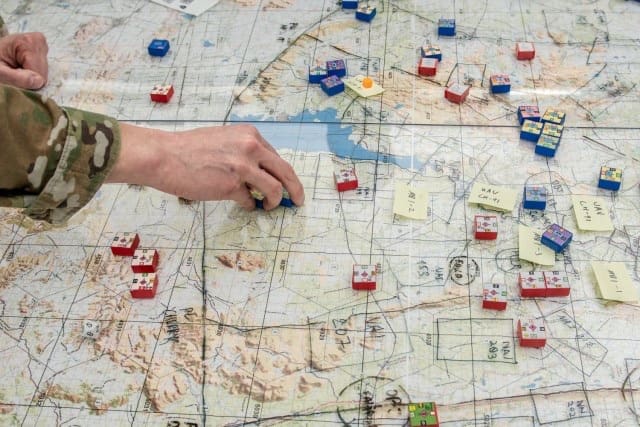Honoring 250 Years of Sapper Excellence in the U.S. Army Corps of Engineers

WASHINGTON In the U.S. Army Corps of Engineers (USACE), the term sapper holds significant weight, symbolizing a rich tradition that spans over two centuries. For the last 250 years, sappers have served as elite combat engineers, providing crucial support to frontline infantry across every conflict in American history.
According to USACE Command Sgt. Maj. Douglas Galick, the origins of the term sapper can be traced back to the 17th century, deriving from a French term. Historically, military engineers were tasked with digging trenches to breach enemy defenses, all while minimizing their exposure to enemy fire. Those trenches were called saps. The Soldiers who excavated them were known as sappers, Brig. Gen. Joseph Goetz, commanding general of the USACE Pacific Ocean Division, elaborates.
The legacy of sappers can be traced back to the American Revolution, where military engineers played a pivotal role in constructing vital infrastructure such as roads and fortifications. This tradition has roots in trench warfare that dates back even earlier than the establishment of the American Army, notes Col. Francis Pera, commander of the USACE Baltimore District.
In contemporary military operations, sappers continue to fulfill their role as combat engineers, adeptly performing some of the most demanding and critical tasks on the battlefield. An engineer leader who serves as a sapper is an expert in mobility, countermobility, and survivability, Galick explains, highlighting their importance in ensuring operational success.
Modern sappers are tasked with clearing paths for friendly forces to maneuver effectively, creating obstacles to impede enemy advances, and constructing fortifications that provide protection for soldiers during conflicts. Our objective is to create pathways for maneuver, disrupt enemy movement, and ultimately buy time and space for our team amidst the chaos of battle, Pera states.
In addition to their engineering expertise, sappers often take on infantry roles when necessary, fully engaging in a range of operations, including offensive, defensive, and peacekeeping missions. A sapper represents the cutting edge of our nations military capabilities, asserts Col. Christopher Klein, commander of the USACE Middle East District. They embody the best of the best within the engineer corps, stepping in to lead the infantry, especially in challenging situations.
The Sapper Leader Course is an intensive 28-day program that takes place across various terrains, including Fort Leonard Wood, Missouri, and the picturesque Mark Twain National Forest. This rigorous training equips soldiers with essential skills in mobility, countermobility, survivability, demolitions, engineer reconnaissance, and other technical competencies required at the small unit level. The course acts as a force multiplier for maneuver commanders, enhancing their effectiveness both in competitive and conflict scenarios.
The Sapper Leader Course is divided into two distinct phases: general skills and patrolling. Techniques ranging from advanced demolitions to land navigation, as well as foundational skills in waterborne and airborne operations, are covered in the first phase, explains Maj. Blake Jones from the USACE New England District.
Leadership is put to the test during the patrolling phase, which is characterized by extreme stress and demanding conditions. The course is incredibly intense, remarks Maj. Charles Martin, a USACE Baltimore District realty specialist. It is designed to push you to your limits.
This intensity is by design. We aim to establish a solid baseline so that when real-life situations arise, soldiers can perform the right actions, shares Lt. Col. Nicholas Lorusso, deputy commander of the USACE New England District.
Lt. Col. Lamar Cantelou, aide de camp at USACE, reflects on his experience, stating, Sapper School taught me that I can endure hunger and fatigue, pushing my body to the edge while still making sound technical and tactical decisions under stress.
In 2024, the graduation rate for the Sapper School was reported to be just under 50%. As an engineer, you become a versatile tool, much like a Swiss Army knife, shares Capt. Walter Dezir, a project engineer from the USACE Honolulu District. The Sapper Leader Course prepares you to operate effectively in various weather conditions and scenarios.
Achieving the Sapper Tab is a prestigious distinction that signifies mastery in combat engineering and leadership. Wearing the tab carries a certain credibility among fellow engineer leaders, Galick explains. Maneuver counterparts recognize that an engineer leader donning a Sapper Tab is a master of their craft, making them the go-to expert on the battlefield.
The U.S. Army Engineer School (USAES), established in 1866, formalized the training and development of combat engineers, ensuring that sappers remain a cornerstone of U.S. military strategy. The Sapper Leader Course was initiated in 1985 and received full accreditation as a United States Army Training and Doctrine Command course in 2004. In the same year, the Army officially authorized the wearing of the Sapper Tab, an initiative championed by then-Chief of Engineers Lt. Gen. Robert B. Flowers.
Since 2005, the USAES has organized the Lt. Gen. Robert B. Flowers Best Sapper Competition at Fort Leonard Wood, which tests the physical endurance, mental resilience, and technical skills of participating sappers. Contestants cover an impressive 50 miles in 50 hours while tackling a variety of tactical and technical challenges. The upcoming competition, scheduled for April 2529, 2024, commemorates both the 40th anniversary of the Sapper Leader Course and the 250th anniversary of the Engineer Regiment.
Retired Lt. Gen. Flowers succinctly captures the essence of the sappers role: When our nation needs a tough job done, they call the Army. When our Army needs a tough job done, they call on the sappers.
As the role of the sapper continues to evolve after 250 years, their expertise in breaching obstacles, laying and clearing mines, and constructing field defenses remains vital to military operations globally. Their unique skill set makes them an indispensable asset and a force multiplier on the battlefield.
Col. Klein articulates the dual facets of a sapper, saying, Sappers embody the combination of the analytical skills of an engineer alongside the bravery of a soldier.














